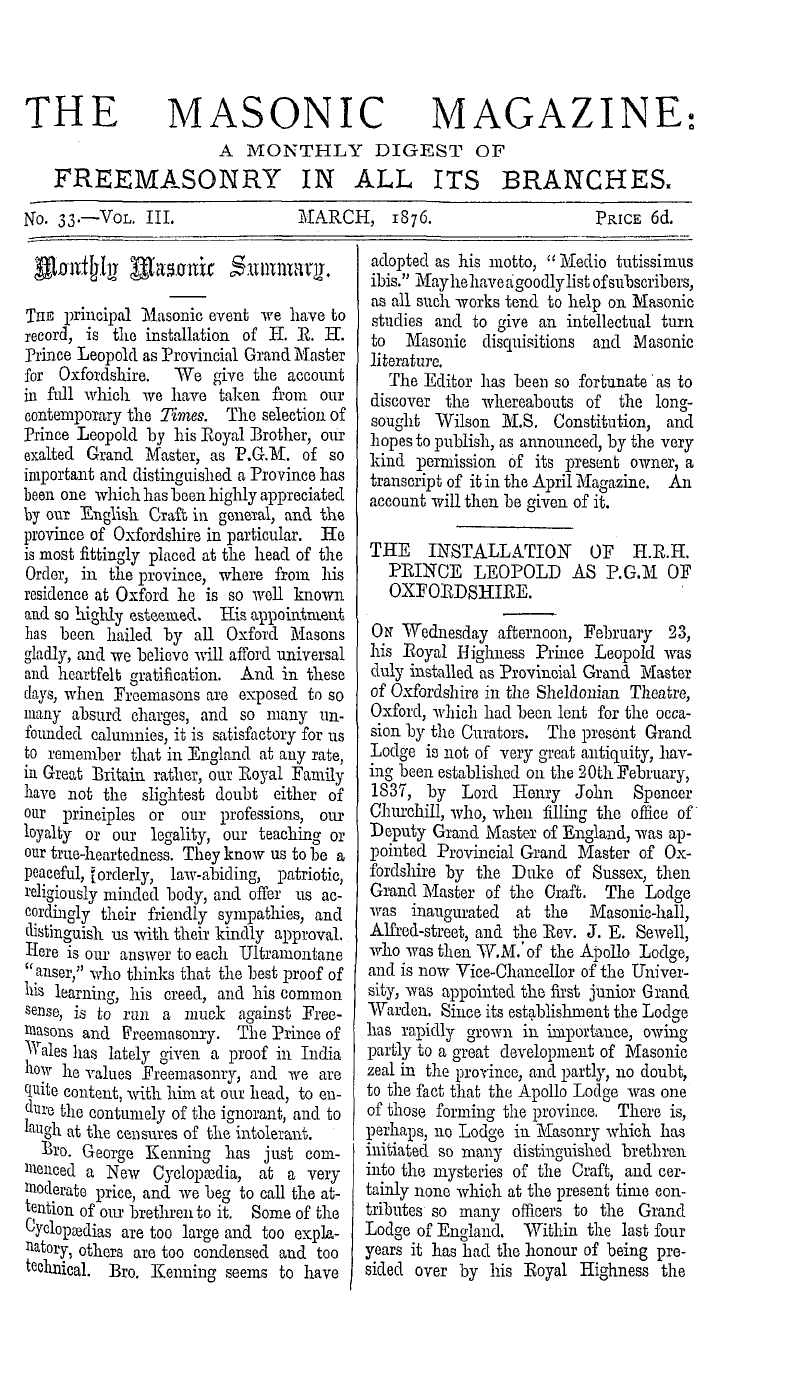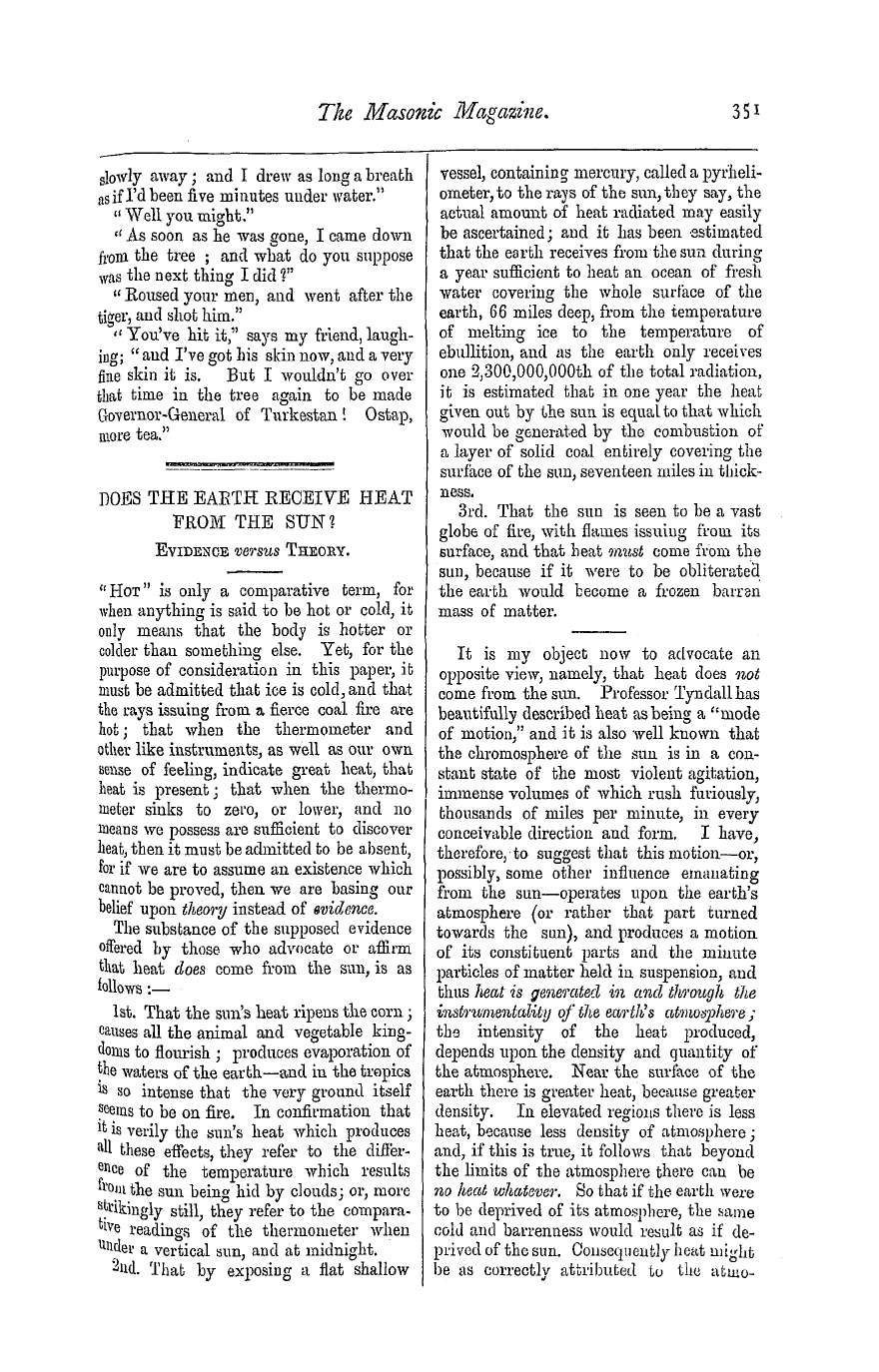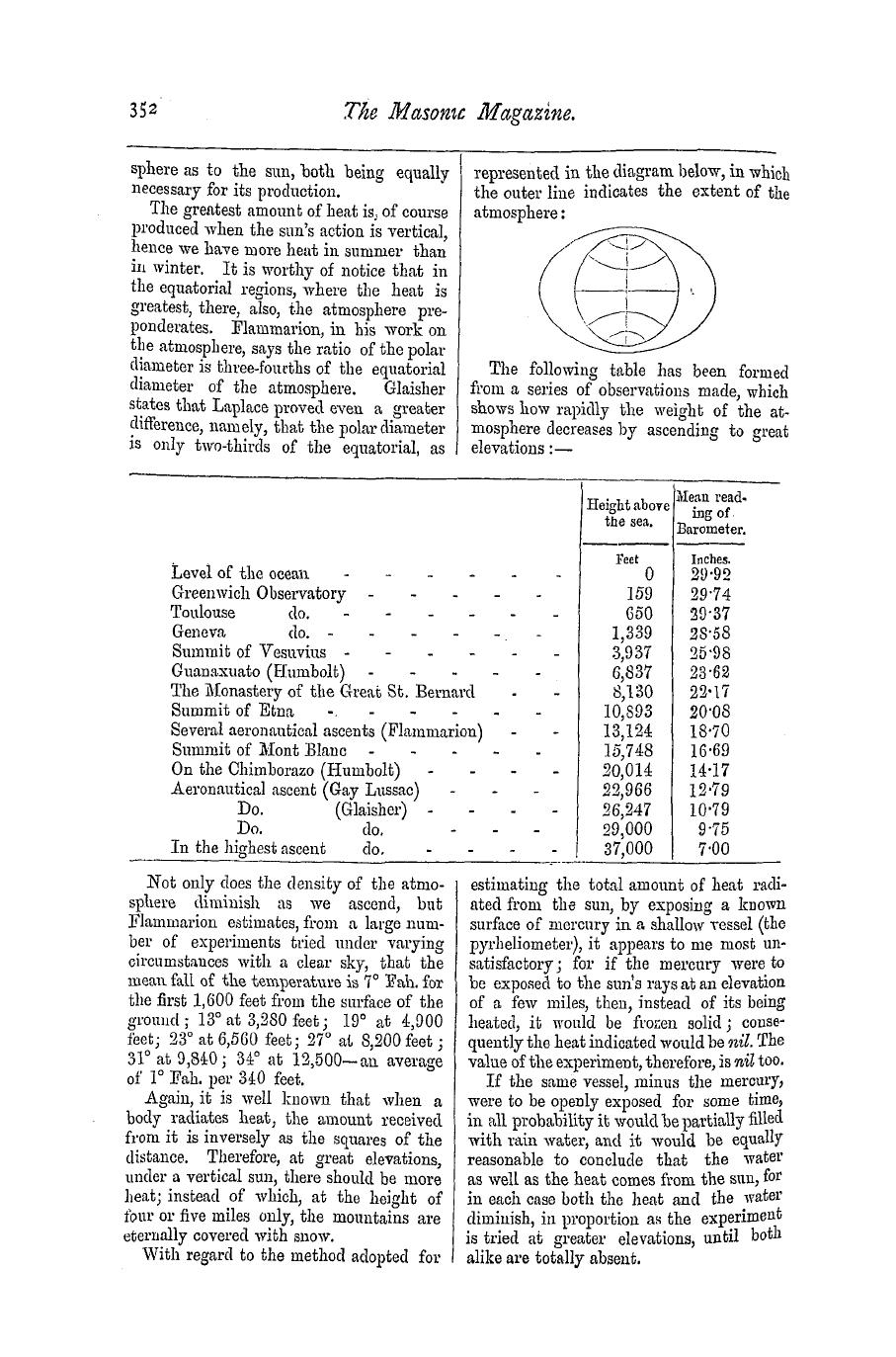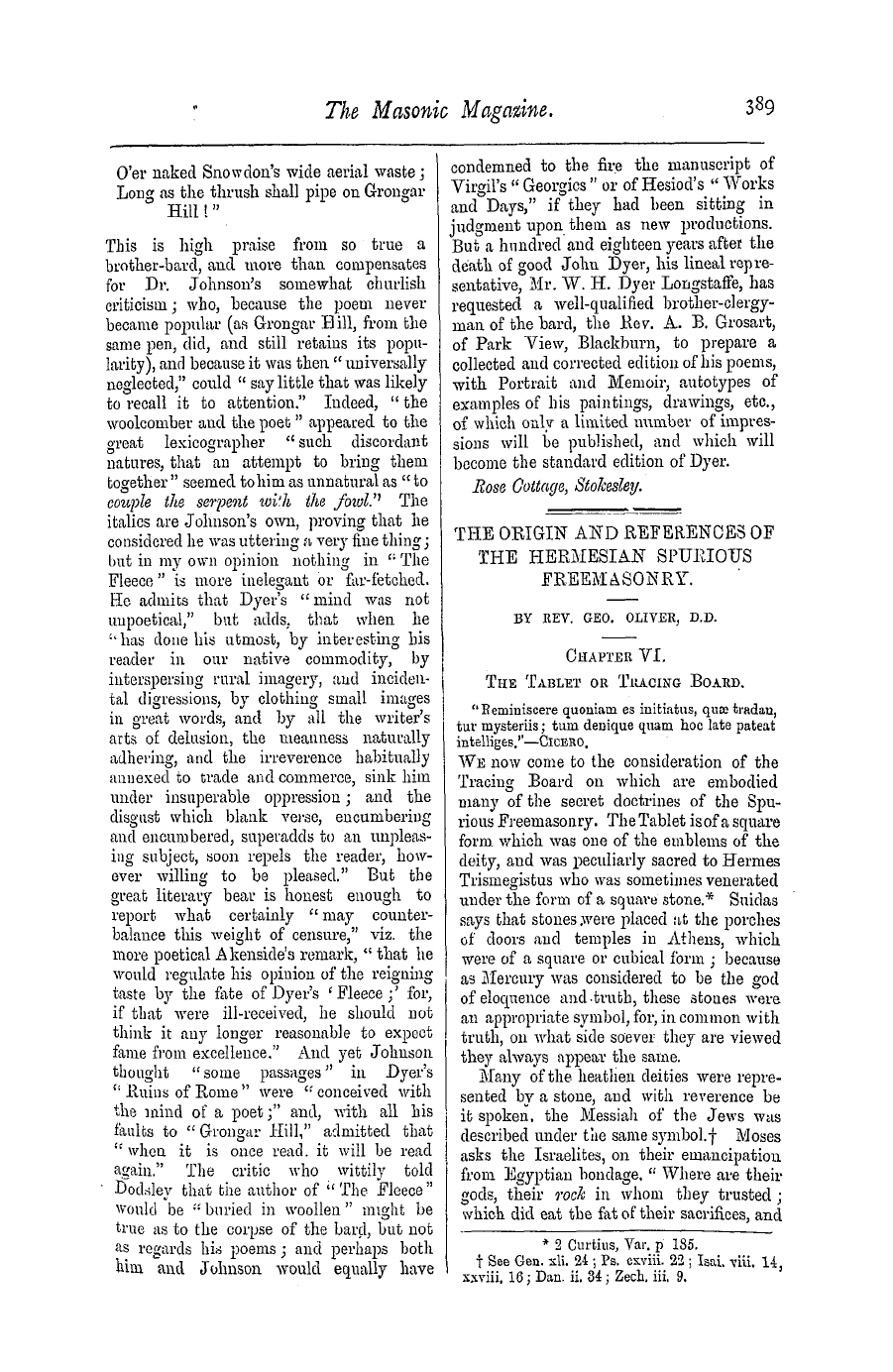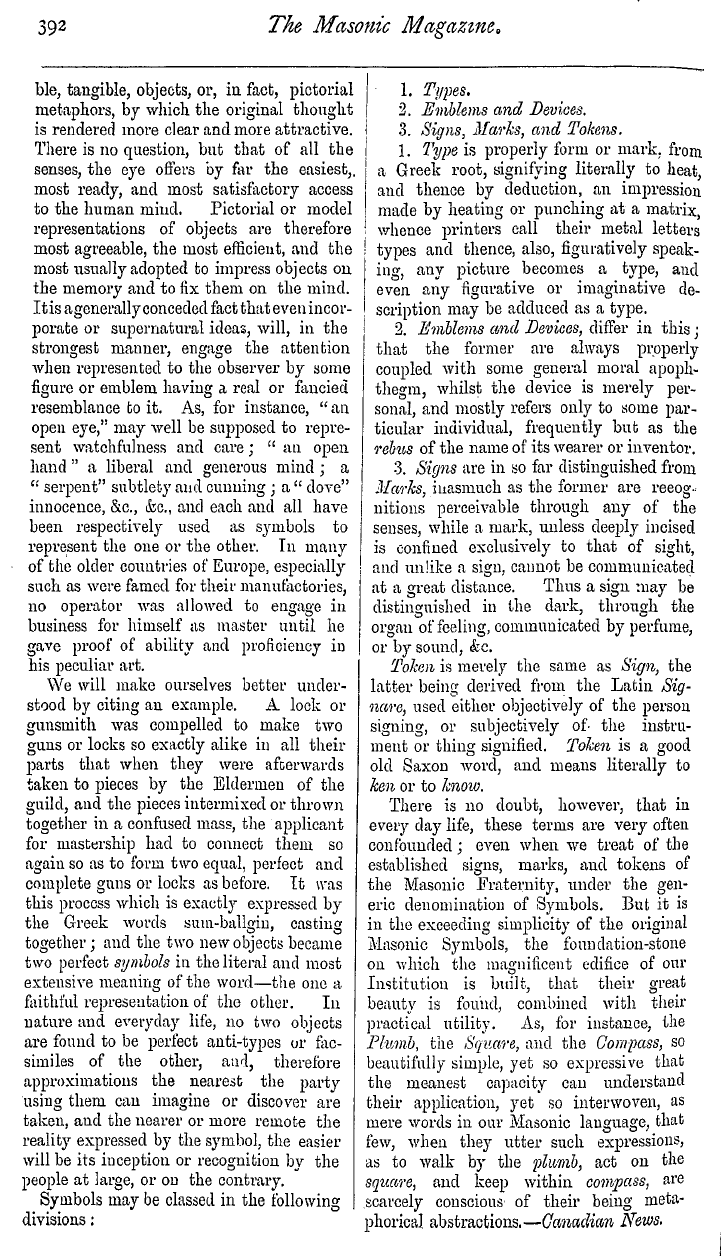-
Articles/Ads
Article NOTES ON LITERATURE, SCIENCE AND ART. ← Page 4 of 6 →
Note: This text has been automatically extracted via Optical Character Recognition (OCR) software.
Notes On Literature, Science And Art.
Philip Kinder ' s quaint outline sketch of Derbyshire history , from the same library , and of William Wolley ' s History , comp leted in 1712 , the original of which is at the College of Arms . And no other word than magnificent can do justice to the various volumesrich in orig inal sketches of the
, greatest fidelity , gorgeous in binding , and brilliant with the illuminator ' s art , which treats of the abbeys , castles , crosses , but more especially of the monuments , of Derbyshire . " How numerous the monumental inscriptions in the churches of
Derbyshire must be , maybe judged from the statement of Mr . Cox , that a simple transcript of those in Scarsdale alone would fill more than five hundred pages of his book ! Of that rather knotty point , the transition periods of architectureMr . Cox
, very sensibly observes : — " It has been with no little diffidence that I have treated of the Architectural Periods , as displayed in the construction of the respective churches , for there is considerable difference ' of
opinion , even amongst the most competent ecclesiologists , with respect to the different epochs of 'transition , ' when the styles are wont to overlap one another . I think , however , that it will be found that I have not expressed myself with too great confidencein assigning dates to any details of
, doubtful chronology ; if I have erred , it has not been for lack of consulting the best authorities , such as Rickman , Bloxam , Willis , Pugin , Parker , Brandon , Fergusson , and Sharpe , nor for lack of a wide-spread personal knowledge of our parish churches
in different parts of England , which is of far more value than the closest study of books or engravings . As it is hoped that this volume and its successors will be books of popular reference in the county , I have confined myself to the simple and
generally known divisions of English architecture , originally adopted by Mr . Rickman , viz . ( 1 ) the Saxon , from 800 to 1066 ; ( 2 ) the Norman , from 1066 to 1145 ; ( 3 ) the Early English , from 1145 to 127 * 2 ; ( 4 ) the Decorated , from 1272 to 1377 ;
and ( 5 ) the Perpendicular , from 1377 to 1509 . These divisions are generally accepted as sufficing for popular purposes ; but of the more detailed and technical divisions of later writers , there are none so correct in nomenclature , and so accurate ui the separation of style , as the seven
periods of Mr . Edmund Sharpe . The first and second of his periods are the same as given above ; but the third is styled Transitional from 1145 to 1190 ; the fourth the Lancet , from 1190 to 1245 ; the fifth the Geometrical , from 1245 to
1315 ; the sixth the Curvilinear , from 1315 to 1360 ; ancl the seventh the Rectilinear , from 1360 to 1550 . It is much to be wished , " he adds , " that our various archaeological and architectural societies would come to some understanding
by which such terms as ' Decorated' and ' Perpendicular' mig ht be abandoned for more expressive and accurate nomenclature ; but , until this is done , it is not to be expected that they will be forsaken in a work like the present . " I hope , in succeeding
" Notes , " to lay Mr . Cox ' s admirable work under contribution ; for , as he well observes , " only those who are prepared to attack the whole science of history , can afford tosneer at the most painstaking researches in even the humblest of her bye-paths . " The history
of our parish churches must have great interest for every true Freemason , notwithstanding the modern divorce of Operative and Speculative Masonry ; and I for one will never consider we fully carry out our duties as Fellow-craftsmen until we do
more to foster in our lodges everything bearing on Literature , Science , and Art , as well as the whole " moral virtues . " Bro . Thomas Sampson , F . R . H . S ., of Yeovil , has published , in a neat pamphlet , " The Legend of the Holy Thorn of
Glastonbury , " in which he remarks , that "many and various are the legends concerning this Holy Thorn , and though we cannot look to them for any 'large amount of historical truth , still it is not altogether idle of useless to know what they say about this
famous tree . It is beyond all question that a Thorn has grown on the south ridge of Wearyall Hill ( now called Werrall Park ) since the earliest ages of Christianity , and that this Thorn budded and blowed yearly upon Christmas Day . " The miraculous
accounts of it are all pleasantly told by Bro . Sampson , and are interesting as specimens of the superstition which too often took the p lace of true religion in ages when science was but little known , and priestcraft held the minds of our brave ancestors in thrall . '' Modern science , " as our brother well observes , " which has dissipated so
Note: This text has been automatically extracted via Optical Character Recognition (OCR) software.
Notes On Literature, Science And Art.
Philip Kinder ' s quaint outline sketch of Derbyshire history , from the same library , and of William Wolley ' s History , comp leted in 1712 , the original of which is at the College of Arms . And no other word than magnificent can do justice to the various volumesrich in orig inal sketches of the
, greatest fidelity , gorgeous in binding , and brilliant with the illuminator ' s art , which treats of the abbeys , castles , crosses , but more especially of the monuments , of Derbyshire . " How numerous the monumental inscriptions in the churches of
Derbyshire must be , maybe judged from the statement of Mr . Cox , that a simple transcript of those in Scarsdale alone would fill more than five hundred pages of his book ! Of that rather knotty point , the transition periods of architectureMr . Cox
, very sensibly observes : — " It has been with no little diffidence that I have treated of the Architectural Periods , as displayed in the construction of the respective churches , for there is considerable difference ' of
opinion , even amongst the most competent ecclesiologists , with respect to the different epochs of 'transition , ' when the styles are wont to overlap one another . I think , however , that it will be found that I have not expressed myself with too great confidencein assigning dates to any details of
, doubtful chronology ; if I have erred , it has not been for lack of consulting the best authorities , such as Rickman , Bloxam , Willis , Pugin , Parker , Brandon , Fergusson , and Sharpe , nor for lack of a wide-spread personal knowledge of our parish churches
in different parts of England , which is of far more value than the closest study of books or engravings . As it is hoped that this volume and its successors will be books of popular reference in the county , I have confined myself to the simple and
generally known divisions of English architecture , originally adopted by Mr . Rickman , viz . ( 1 ) the Saxon , from 800 to 1066 ; ( 2 ) the Norman , from 1066 to 1145 ; ( 3 ) the Early English , from 1145 to 127 * 2 ; ( 4 ) the Decorated , from 1272 to 1377 ;
and ( 5 ) the Perpendicular , from 1377 to 1509 . These divisions are generally accepted as sufficing for popular purposes ; but of the more detailed and technical divisions of later writers , there are none so correct in nomenclature , and so accurate ui the separation of style , as the seven
periods of Mr . Edmund Sharpe . The first and second of his periods are the same as given above ; but the third is styled Transitional from 1145 to 1190 ; the fourth the Lancet , from 1190 to 1245 ; the fifth the Geometrical , from 1245 to
1315 ; the sixth the Curvilinear , from 1315 to 1360 ; ancl the seventh the Rectilinear , from 1360 to 1550 . It is much to be wished , " he adds , " that our various archaeological and architectural societies would come to some understanding
by which such terms as ' Decorated' and ' Perpendicular' mig ht be abandoned for more expressive and accurate nomenclature ; but , until this is done , it is not to be expected that they will be forsaken in a work like the present . " I hope , in succeeding
" Notes , " to lay Mr . Cox ' s admirable work under contribution ; for , as he well observes , " only those who are prepared to attack the whole science of history , can afford tosneer at the most painstaking researches in even the humblest of her bye-paths . " The history
of our parish churches must have great interest for every true Freemason , notwithstanding the modern divorce of Operative and Speculative Masonry ; and I for one will never consider we fully carry out our duties as Fellow-craftsmen until we do
more to foster in our lodges everything bearing on Literature , Science , and Art , as well as the whole " moral virtues . " Bro . Thomas Sampson , F . R . H . S ., of Yeovil , has published , in a neat pamphlet , " The Legend of the Holy Thorn of
Glastonbury , " in which he remarks , that "many and various are the legends concerning this Holy Thorn , and though we cannot look to them for any 'large amount of historical truth , still it is not altogether idle of useless to know what they say about this
famous tree . It is beyond all question that a Thorn has grown on the south ridge of Wearyall Hill ( now called Werrall Park ) since the earliest ages of Christianity , and that this Thorn budded and blowed yearly upon Christmas Day . " The miraculous
accounts of it are all pleasantly told by Bro . Sampson , and are interesting as specimens of the superstition which too often took the p lace of true religion in ages when science was but little known , and priestcraft held the minds of our brave ancestors in thrall . '' Modern science , " as our brother well observes , " which has dissipated so
